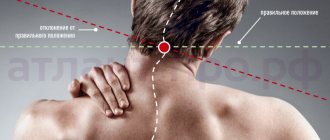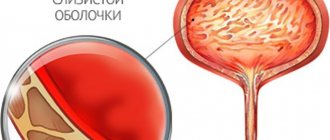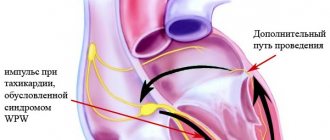How changes happen
Menopausal syndrome lasts up to several years; it is normally observed in women aged 45 to 69 years. The duration and time of manifestation depend on the individual characteristics of the organism and hereditary factors.
There are three main periods in the process:
- premenopause, characterized by a violation of the regularity of the cycle;
- menopause, its beginning – absence of menstruation for a year;
- postmenopause, the period from menopause and up to 10 years after.
All changes in the body are caused by hormonal transformations, which also cause concomitant menopausal syndrome in women.
Menopause - symptoms and treatment
Treatment of menopausal syndrome is usually required for moderate to severe cases. It is carried out in three directions: non-medicinal, medicinal and hormonal.
Non-drug treatment
, non-drug treatment is mainly used
- phytotherapy; [10]
- general strengthening gymnastics, massage, physical therapy - exercises to strengthen the pelvic floor muscles, maintain joint mobility and elasticity of ligaments, slow down the loss of bone and muscle mass;
- physiotherapeutic procedures - galvanization, electroanalgesia, electrophoresis with novocaine on the collar area and other techniques;
- acupuncture;
- sanatorium-resort treatment - climatotherapy, balneotherapy, hydrotherapy.
To normalize the psycho-emotional state, psychotherapeutic techniques and relaxation methods will be useful [5].
Nutrition and diet
It is recommended to limit the consumption of animal fats, simple carbohydrates, table salt and caffeine-containing products, as well as enrich the diet with fiber, vegetable oils, and dairy products.
Non-hormonal drugs
At the second stage, non-hormonal medications :
- vitamin complexes containing vitamins A, C, E, D and B vitamins;
- herbal medicines containing substances similar to female sex hormones;
- sedatives, neuroleptics, tranquilizers;
- symptomatic remedies;
- drugs for the treatment of concomitant diseases.
Hormonal treatment
The third stage is hormonal treatment . Basic principles of hormone replacement therapy:
- only analogues of natural female hormones are used;
- low doses of estrogens are used in combination with progestogens (if the uterus is removed, isolated use of estrogens is possible - monotherapy);
- The duration of treatment with hormones is at least 5-7 years.
Various hormonal drugs are designed for different stages of menopause:
- during early menopause in relatively young women, drugs simulate a menstrual-like reaction;
- for women of the older age group who do not want to resume menstrual flow, medications that contain a much lower dosage of hormones are indicated;
- for women who have been in menopause for at least one and a half years, medications are prescribed that are aimed at preventing osteoporosis, cardiovascular diseases, inflammatory processes of the urogenital tract and mitigating vasomotor symptoms.
Methods of administering hormones can be different: oral (orally in the form of tablets), vaginal, intrauterine, external (in the form of patches or gels) and injection.[2][3]
In each case, an individual selection of the drug by the doctor is necessary, taking into account the individual characteristics of the patient and contraindications.
Combating vaginal dryness during menopause
At any stage of menopause, it is possible to use products that improve the condition of the external genitalia and vaginal mucosa. They are indicated for women who have pronounced signs of atrophic changes in the skin and mucous membrane of the genital organs, accompanied by itching, a feeling of dryness, significant difficulties during sexual intercourse (up to their impossibility) and urinary incontinence (in the early stages). We are talking about the local use of hyaluronic acid preparations, which moisturizes the skin and mucous membranes to the deep layers, increases firmness and elasticity, and improves appearance.
Also in recent years, so-called laser vulvorejuvenation has been used - exposure to a special type of laser irradiation, as a result of which trophic processes in the skin and mucous membranes are improved, and the feeling of dryness and discomfort is eliminated.
Treatment of hot flashes during menopause
In addition to hormonal medications prescribed by your doctor, the following may help with hot flashes:
- avoid provoking factors, such as bright light or emotional overload;
- reduce the external temperature using an air conditioner or fan;
- choose clothes that can be easily removed if necessary [11].
Treatment of hypertension during menopause
Treatment of hypertension occurs together with a cardiologist, who prescribes appropriate medications.
Therapy for osteoporosis during menopause
All postmenopausal women are recommended to be screened for osteoporosis. Patients are managed together with an endocrinologist.
Quitting smoking
One of the important components of successfully combating the negative manifestations of menopausal syndrome is a complete cessation of smoking .[4] In women who smoke, menopausal syndrome often occurs especially severely at an earlier age, and hormone therapy while smoking can lead to severe side effects.
Pathogenesis
Symptoms are distinguished depending on the stage of restructuring of the body. In the early period, the following factors are present:
- mood changes;
- increased aggressiveness or irritability;
- increased sweating;
- changes in appetite and taste preferences;
- tides;
- exacerbation of headaches or dizziness;
- frequent changes in blood pressure;
- heartbeat.
The middle period is characterized by the following features:
- anxiety and depression;
- chronic fatigue and feeling of weakness;
- dry skin;
- deficiency of vaginal mucous secretions;
- decreased libido;
- cystalgia;
- impaired concentration.
In the later stages, in addition to the sexual sphere, hormonal changes affect other body systems. The third period is accompanied by the following symptoms:
- increased blood pressure;
- manifestation of atherosclerosis and osteoporosis;
- manifestation of diseases of muscles and joints;
- visual and hearing impairment;
- exacerbation of type 2 diabetes mellitus.
Forming correct eating behavior
Any diet, despite their big names, does much more harm than good - most of them cannot provide balanced nutrition. But we don’t know how to listen to the true needs of the body - because the numbers on the scales are often more important to us than how we feel. Conclusion: not diets and breakdowns, but proper nutrition, which, again, is best taught from childhood.
By the way, the diet must include not only “chicken breast and lettuce”, which people love to write about on weight loss forums, but also – surprise! – fats, both vegetable and animal. Of course, no one can cancel the need to monitor the calorie content of food consumed.
- Eat often, but little by little. Remember how little children are fed? A little bit every 3 hours. Over the years, the body's needs in this regard do not change.
Don't forget about fermented milk products. Cottage cheese and kefir are calcium, and calcium is the prevention of osteoporosis and joint diseases.
- Fats should definitely be included in your diet. Nuts, vegetable oil, fatty fish - not much, but certainly and preferably every day.
- Forget about mayonnaise, ketchup and sweet soda. Choose simple foods—that is, those that are made from understandable ingredients in an understandable way. If you really want to dress your salad with mayonnaise, make your own mayonnaise. Remember that you have every right to know what you eat and why.
Causes of pathology
Treatment of menopause in women is carried out taking into account the cause of the development of pathological conditions. The severity of menopausal syndrome is determined by the following factors:
- heredity;
- past illnesses;
- stress;
- Lifestyle.
The pathological condition has three stages: mild, moderate and severe. The condition is segmented by quality of life, changes in well-being and the presence of hot flashes.
Types of menopause
According to the age of onset, menopause can be premature (up to 40 years), early (40-45 years) and late (55-60 years).
Any such deviation from the average age of 45-55 years is considered a pathology and indicates the presence of serious diseases in the body. Pathological menopause is a condition when hormonal changes are accompanied by severe disturbances in the endocrine, cardiovascular, nervous systems and psychological state of a woman.
Artificial menopause occurs after removal of both ovaries (oophorectomy) during radical treatment of severe gynecological diseases, after chemotherapy or radiation therapy and as a result of primary ovarian failure (inability to produce estrogen).=
What examinations are needed
Treatment of menopausal syndrome in a woman involves monitoring her health and correcting pathological conditions. A consultation with a gynecologist involves taking a medical history, recording complaints and examining the patient.
You may also need:
- consultation with an endocrinologist;
- consultation with a cardiologist;
- mammography;
- general blood analysis;
- blood biochemistry;
- smear cytology;
- densitometry;
- Ultrasound of the pelvic organs;
- hemostasiogram.
Constant health monitoring allows you to adequately respond to changes in hormonal levels and alleviate your general condition.
Tests for menopause
Laboratory tests include blood tests to determine levels of several hormones:
- estradiol is produced by the ovaries and is responsible for the development of eggs and menstruation; during menopause, its concentration decreases;
- Anti-Mullerian hormone is produced by the follicles themselves and regulates their development. By its level, you can determine the supply of full-fledged eggs and, accordingly, the possibility of getting pregnant;
- inhibin B is produced by the ovaries, and a decrease in its concentration in the blood indicates a weakening of ovarian function;
- follicle-stimulating hormone controls the release of estradiol;
- luteinizing hormone affects ovulation processes; its level increases with ovarian pathologies;
- prolactin is responsible for the regulation of menstruation, and in their absence, its concentration decreases;
- thyroid-stimulating hormone: its level is determined to exclude thyroid deficiency (hypothyroidism), which manifests itself with similar symptoms.
Among instrumental examination methods, pelvic ultrasound is used for the differential diagnosis of other diseases, the symptoms of which resemble menopausal changes.
Other examinations (ultrasound of other organs, mammography, general and extended biochemical blood tests, urine tests, smears for the presence of cancer cells) are prescribed in case of complicated menopause or suspicion of concomitant disorders.
When does menopause begin to develop?
For women living in different countries, the average time for the onset of menopause may differ. Belarusian women most often experience menopause when they reach the age of about 45-50 years.
What symptoms suggest that menopause is approaching? ● Fatigue. ● Increased nervousness. ● Tearfulness, irritability, emotional instability. ● The vast majority of women experience menstrual irregularities.
Often these symptoms can be confused with emotional burnout and fatigue. However, if the symptoms of fatigue and emotional burnout are associated with external factors and are eliminated by calmness, rest, and a change of environment, then the symptoms of menopause are caused by a woman’s hormonal imbalance. When the ovaries begin to fail, they reduce production of the hormones estrogen and progesterone.
It is the lack of hormones that provokes the occurrence of such nervous conditions in a woman.
Hormones play an extremely important role in a woman’s body. Estrogen is responsible for a woman’s appearance - the condition of her skin, hair, nails, emotional stability and colorful life. The second hormone, progesterone, is very important for pregnancy and gestation. It is he who gives pregnant women that very calmness and tranquility. The lack of production of these hormones can greatly ruin a woman’s life.
“Yes, I’m getting old,” says Sharon Stone, who is already 60 years old. ─ But it seems to me that in the art of aging you can allow yourself some “imperfections”; they add sensuality and sexuality to the image. I’m not against plastic surgery, because it’s much worse to live with complexes caused by flaws in appearance, but completely remaking yourself just like that is not normal.”
Over time, when less and less hormones begin to be produced, unpleasant symptoms of menopause are added, such as: ● Hot flashes and fever occur. The woman feels an increase in body temperature, her face becomes covered with red spots and burns. This condition can recur up to several times a day. ● Heavy sweating. Most often during high tides. ● Headaches. ● Dryness, itching, burning, discomfort in the genital area. ● Nervous states arise - you want to cry, feel sorry for yourself, life seems gray and gloomy. Sometimes depression occurs. ● Sleep disturbance. Sleep rhythms become disrupted, women find it more difficult to fall asleep, they often wake up at night, and have difficulty getting out of bed in the morning. ● Osteoporosis may occur. During menopause, calcium is intensively washed out of a woman’s body, her bones become fragile and porous. ● External changes occur - the skin becomes thin and dry, noticeable wrinkles appear. ● Sexual life does not bring the same pleasure. Sexual intercourse becomes painful and causes discomfort. A woman begins to avoid intimate relationships, and her relationship with her partner worsens.
The period between the appearance of the “first signs” and more serious unpleasant symptoms is quite long. It can be up to five years.
How to deal with manifestations
The gynecologist, together with other doctors, determines an effective treatment program. They take into account the degree of manifestation of menopause and related problems.
Hormone therapy
Hormone replacement therapy (HRT) is the most effective method. The patient is prescribed oral administration of a hormone that is now lacking in the body.
Products based on estrogens and progestogens have different effects, so the doctor reduces the quantity and quality of hot flashes, reduces pain, and improves the emotional state. HRT – prevention of cancer, diabetes, osteoporosis.
Side effects
Even the right medications can cause side effects:
- Pain in the mammary glands;
- Vaginal bleeding, spotting;
- Headache;
- Nausea, vomiting;
- Edema;
- Blood clot formation.
If such signs appear, you need to change the hormonal drug.
Non-hormonal therapy
If HRT is contraindicated or the patient refuses it, the doctor prescribes other drugs that reduce menopausal symptoms:
- Antidepressants;
- Antiepileptics;
- Antihypertensive drugs.
A gynecologist will help you choose a remedy for insomnia and other unpleasant symptoms. However, it will not be possible to completely solve the problem; you will have to take a large number of medications, each of which can cause adverse reactions.
Psychotherapy
Consultations with a competent psychologist will help you establish relationships with others, get rid of irritability, tearfulness, and other symptoms. Weekly conversations with a specialist are possible, as well as meditation and yoga.
Let's move
Only the lazy do not say or write that movement is life. But there is one secret: not every movement, but only the one that gives you pleasure.
However, there is a pitfall here. So you started running or dancing, or riding, or going to the gym. Your muscles ache out of habit, it’s hard for you and you don’t want to go to the second lesson at all.
Try working out for three weeks. Tell yourself: I’ve only been lifting my abs in the morning for three weeks. Only for three weeks have I gotten up earlier and gone for a run in the park. I only buy a gym membership for three weeks. And after three weeks, look: do you still have to force yourself to exercise? If you force it, it means it’s not yours. Look for something else. If dancing doesn't work, try yoga. If you don’t like running, buy a pool membership. For three weeks, of course. Sooner or later you will find what you have dreamed of all your life. Perhaps body ballet is your middle name.
What is the reason? The fact is that in 21 days a new habit is instilled, the body masters and assimilates it. This is no longer a new action for you, and you can easily determine with a cool head whether you like it or not.
Prevention and general recommendations
The following rules will help you adequately cope with the natural aging of the body:
- It is necessary to stop smoking and drinking alcohol.
- It is important to lead an active lifestyle: walking, swimming, cycling, skiing.
- You can't give up your intimate life. Hormonal medications help cope with dryness and decreased libido.
- You need to adjust your diet and take vitamin complexes.
- You should regularly undergo preventive examinations and examinations.











